Home & Living
Thanks to The Pandemic, People Are Flocking to a New Trend: Backyard Chicken-Raising
An estimated 12 million people in the U.S. now own backyard chickens. Here's why:
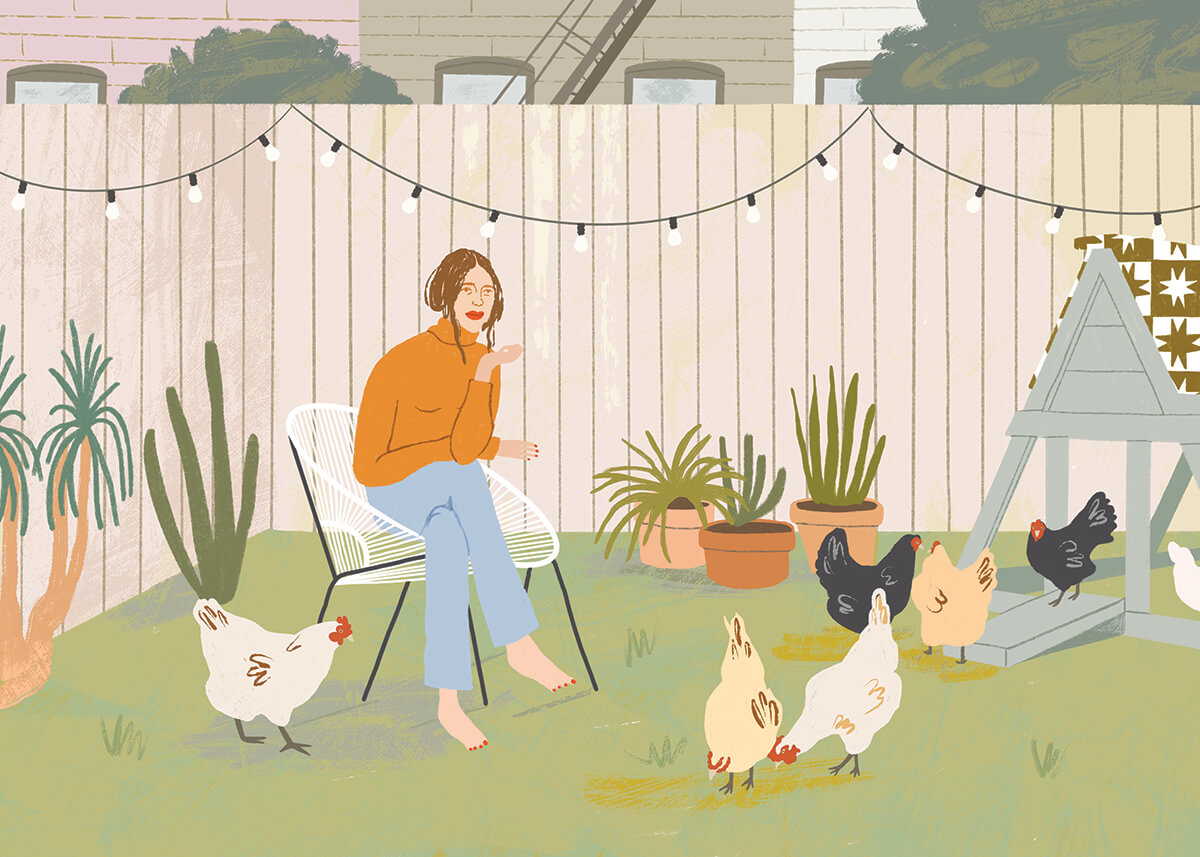
Tucked behind the home of Julien Girard and his wife Akemi Tsuru in the Evergreen neighborhood of Baltimore, a few chickens happily scratch in the dirt. Raspberries grow over their enclosure, which is nestled behind raised beds lush with summer vegetables. Nearby is a small circle of flexible plastic fencing where the chickens can be placed and moved around the yard to enjoy time in the grass. Girard sits nearby under a tree, his laptop still open from a recent Zoom work engagement.
“There are farmers in my family,” says Girard, who is originally from Annecy in the French Alps and moved to Baltimore in 2017. “Now I have an urban ‘farm.’ This gives me a connection to that part of my background and the same is true for my wife.”
But it was not a desire to reconnect with ancestral roots that inspired the family to host hens. Backyard chickens became de rigueur during the pandemic and Girard’s family embraced the trend. While statistics are hard to come by, the American Pet Products Association national pet owner survey states that 12 million people in the U.S. now own backyard chickens.
“We were all here during COVID, we have no family here, we were homeschooling; it was the perfect project to do as a family,” he says.
Girard and Tsuru, who have two children, now 12 and 14, had thought about chickens before, but lockdown was the perfect time to go all in. They ordered chicks from mypetchicken.com, a site that enabled them to buy in small quantities. (Baltimore City has strict regulations on urban flock sizes.) The chicks lived in the kitchen in a box the family fashioned into an incubator with bedding, chick feed, water, and a heat lamp. When they were large enough, they went into the coop Girard constructed in the backyard from a kit. He also built them a secure chicken run.
“We can see them from the kitchen and they’re funny,” says Girard with a smile. “They jump up to get the raspberries and they’re always scratching around; they have their own schedule. I find them quote touching.”
Jodi Litchfield, owner with husband Jeff of Mother Clucker Mobile Coop Services, calls the backyard flocks popping up all over “COVID coops,” and has seen them proliferate since 2020. So much so that they saw a business opportunity.”
“We lost our jobs due to COVID,” Litchfield explains. “We both have a long history in chicken-keeping and we found that, with so many people getting chickens, there was a need to teach new flockers.”
The business “exploded overnight” and now the couple specializes in deep-cleaning coops, pest control, and both online and in-person education on chicken-keeping, especially for beginners. According to Litchfield, the backyard chicken movement was gaining momentum even before the pandemic, as interest grew around sustainability and self-sufficiency, but, “with people being home, they finally had the time to jump in.”
The appeal of chickens is that, unlike most farm animals, they don’t need a lot of land, and once you get their basic food and shelter needs in place, they are pretty low-maintenance. Most breeds can handle cold weather without event the need of a heat source. There are many varietals to choose from that vary in size, temperament, and egg-laying capacity, many sporting elaborate names such as Ameraucana, Barnvelder, and Cuckoo Maran. For your effort, you get eggs that are far superior to even the best organic ones on offer at the grocery.
But for most owners, the food products are just the feather in the cap of poultry ownership. For Girard, an astronomer working on the James Webb Space Telescope, the project was the perfect opportunity to exercise his natural inclination toward research—he delved into understanding everything from how to predator-proof the coop to proper protocols for cleaning and feeding—but what he enjoys is the sense of calm and humor the birds bring to their household.
“I work with technology and data all day, so when I come home it is nice to have this farm-like environment,” he says. “And the kids love them. During COVID, my son would take one of the chickens in the hammock with him and they’d fall asleep.”
The calming effect of chickens is something Michelle Kershner knows well. She was first inspired to get a flock after a trip to Maine where the vacation home had free-range chickens. She found it very relaxing to simply watch them. When she moved to a home in Frederick with a large yard, she finally had the space to legally obtain a few hens.
Her flock, which she started in 2018, is a mix of many breeds, including Buff Orpington, Cream Legbar, Splash Australorp, and Golden Laced Wyandotte. They were such a hit in the neighborhood, Kershner converted an old-fashioned gumball machine into a food dispenser in the alley near the chicken enclosure so locals can grab a handful of feed to scatter for the birds. She even catalogues her hens’ doings on Instagram @frederickchickens.
“I’m not a chicken snuggler, but I love to watch them interacting and it is something tangible I can take care of that produces something,” she explains. “And I’m always learning something new.”
One reason more people are flocking to chicken ownership is recent legal changes. In February, Baltimore County changed its law that required a home to have one acre to acquire chickens. Now, a single-family homeowner can have as many as four hens on a 10,000-square-foot lot, more as the square footage increases. Chelsey Armstrong is a backyard chicken activist and member of the Backyard Chicken Caucus that helped change the county law. She, too, was a COVID cooper. On top of the pandemic, Armstrong was diagnosed with a rare cancer in 2019; chickens gave her something to care for and brought purpose to her lockdown days. She now has a prolific flock at her home in Parkville.
“Knowledge is important. Anyone who gets into chicken-keeping needs to know what they’re getting into,” she says, adding, “but you won’t regret it. They’ll touch your heart.”
Various chicken advocates had tried for years to get the county law changed. Having won its legal battle, Armstrong says, the Chicken Caucus has shifted to education. Before leaping into your backyard adventure, you must understand your local laws, including any HOA regulations against chicken-keeping, she stresses. The city, for example, does not allow roosters. She says first-timers need to understand that chicks grow quickly, and they’ll need an adequate, predator-resistant coop sooner than later.
It’s also important to use rodent-proof feeders and to have protocols in place for bio-security—quarantining new birds before introducing them to the flock, for example, and not keeping wild bird feeders near the coop—to make sure you don’t spread avian diseases.
Armstrong also advises to plan for flock growth. Once someone gets a few chickens, it’s common that they want a few more. “Chicken math is real,” she laughs.
Litchfield says one of the biggest mistakes new chicken owners make is not protecting their flock.
“They get their chickens and seven days later someone has made a meal of them,” she says. Fox, racoons, and possums are all predators and prevalent even in the most urban environments. Simple protections like a dig apron (material in or on the ground surrounding the enclosure that discourages predators digging under fencing) can mean the difference between life and death.
While other common mistakes for new coopers are using improper bedding—the best is pine shavings or hemp—or laying bedding too deep, which can lead to mold and pests, the bigger issue is over-feeding kitchen scraps.
“Their natural diet is not leftover spaghetti,” Litchfield says. “You can give them some fruits and veggies and all the greens and herbs you want because that’s natural to them, but my grandma had a saying: ‘They are not the hogs.’”
Litchfield says that while there were some people re-homing their COVID-era flocks in 2021, the backyard chicken trend is still growing even now that the pandemic wonder has worn off.
“People really enjoy the eggs and knowing where their food comes from,” she says, “but really we find that they love the entire project, the non-stop learning, the whole journey of having chickens.”
Fowl Language
Ready to take the poultry plunge? Choose breeds that are gentle and, particularly in urban and suburban settings, quiet. Here are a few good options:
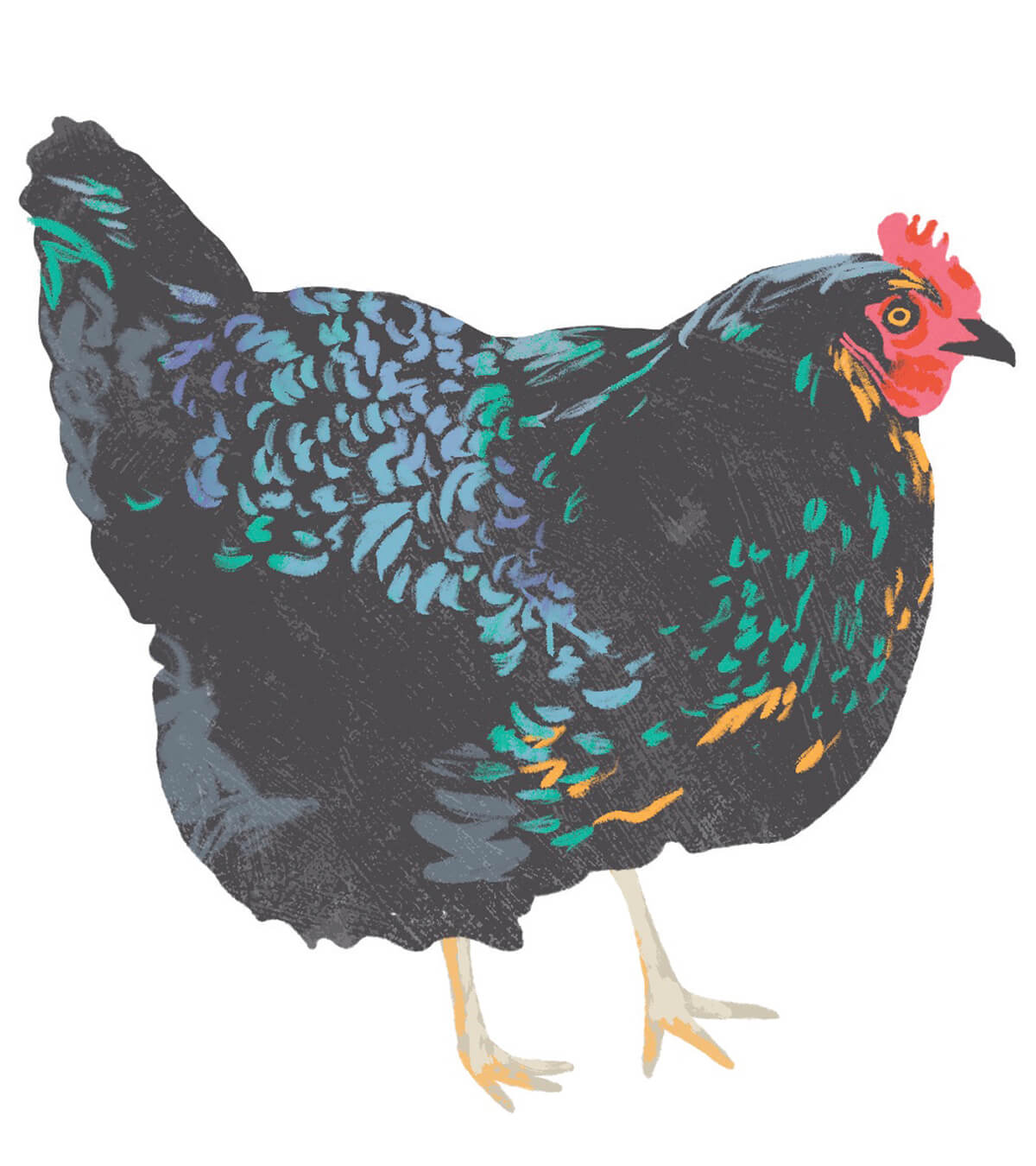
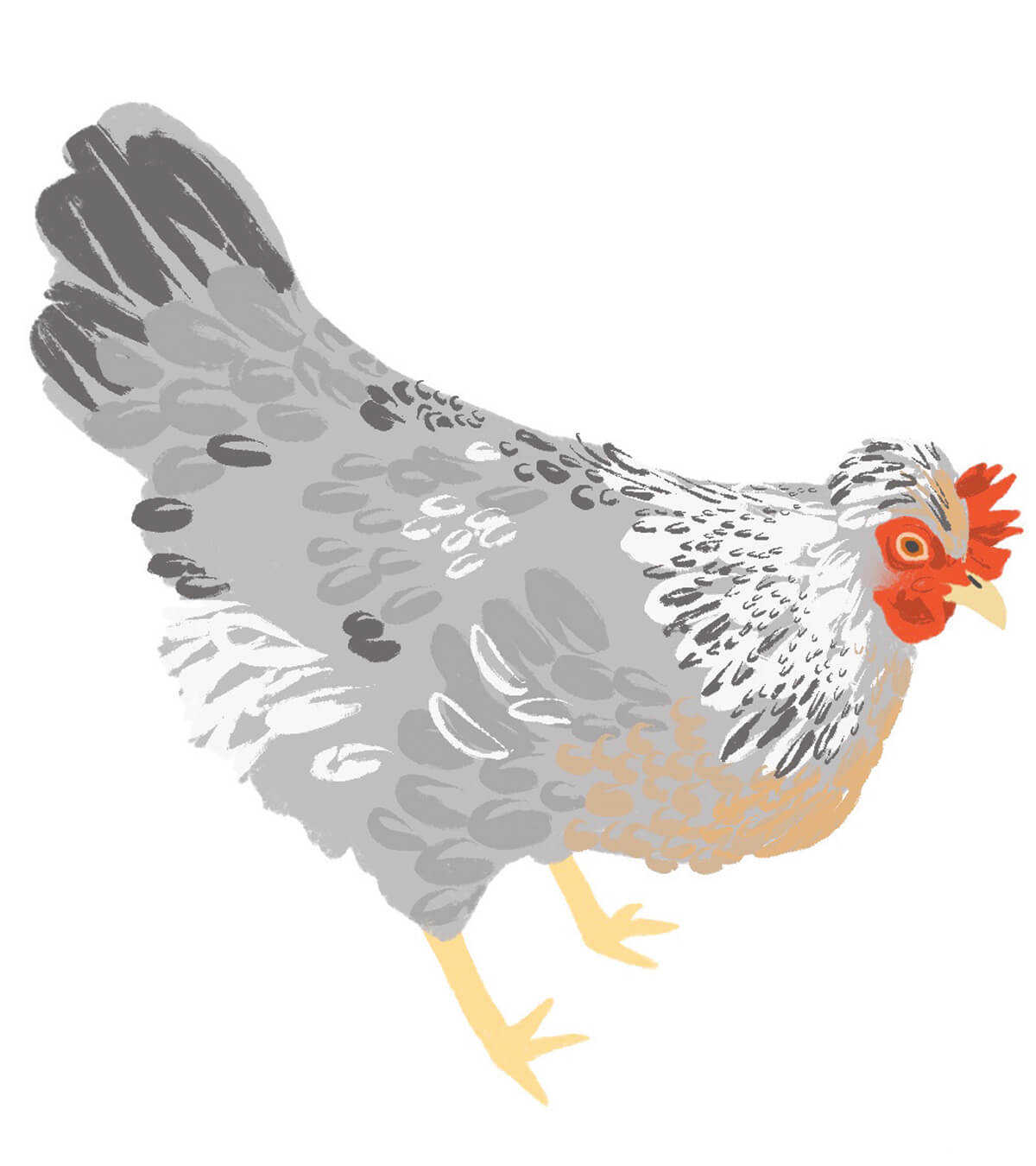
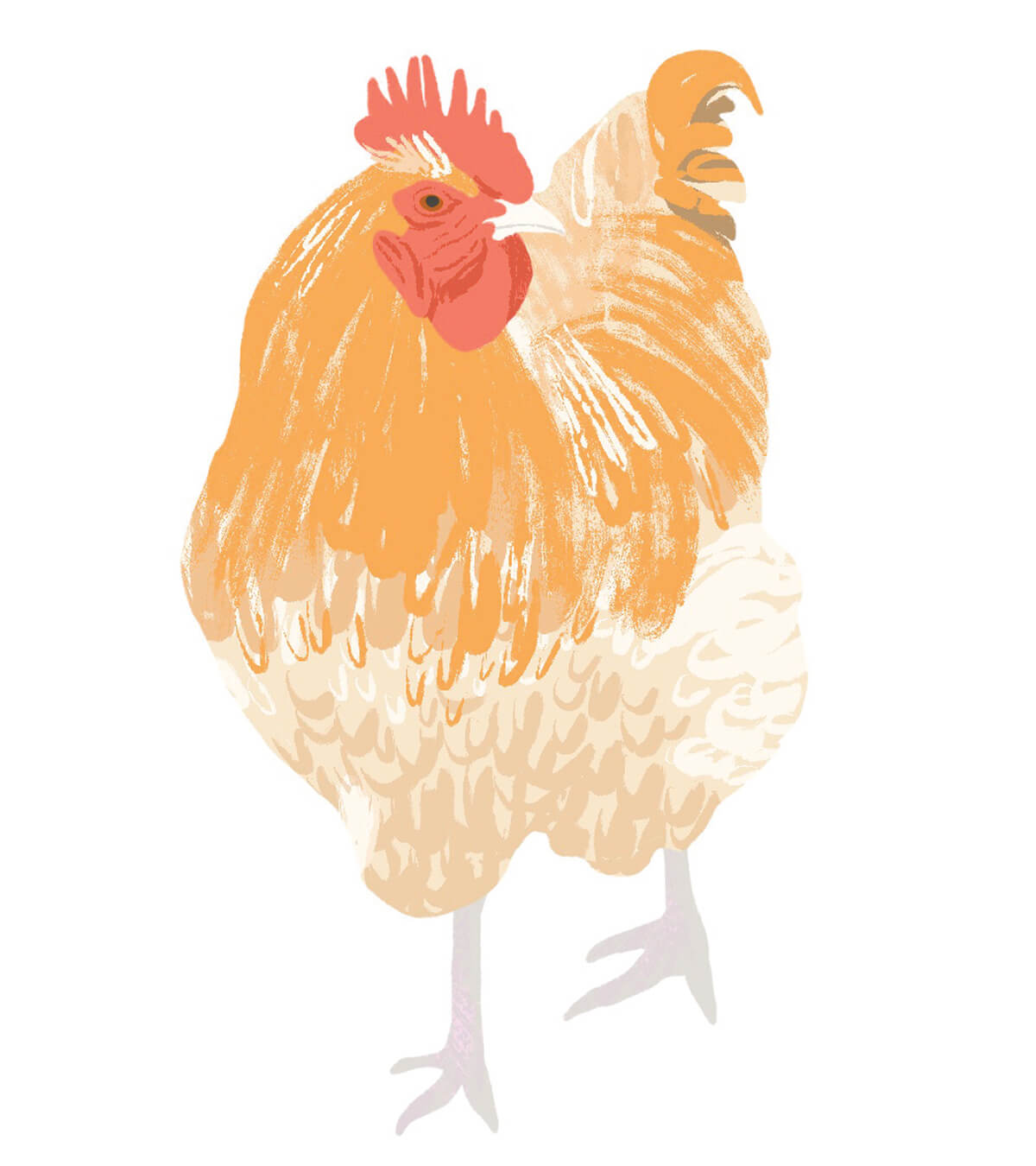
JERSEY GIANTS
Docile and good for egg-laying, but make room in that coop; these birds live up to their sizeable name.
CREAM LEGBAR
Two words: blue eggs!
BUFF ORPINGTON
A statuesque breed with creamy gold plumage and a gentle disposition.
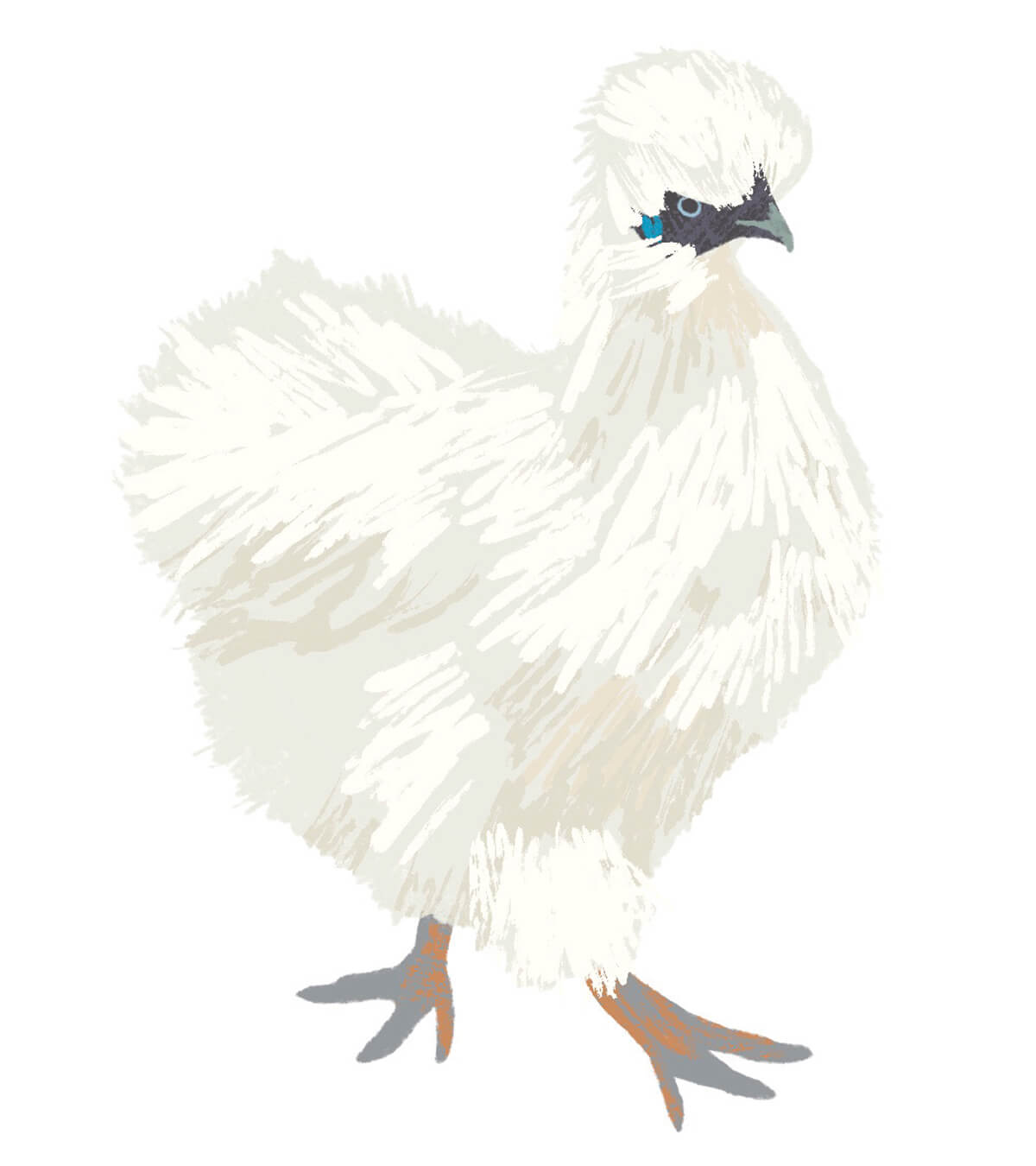
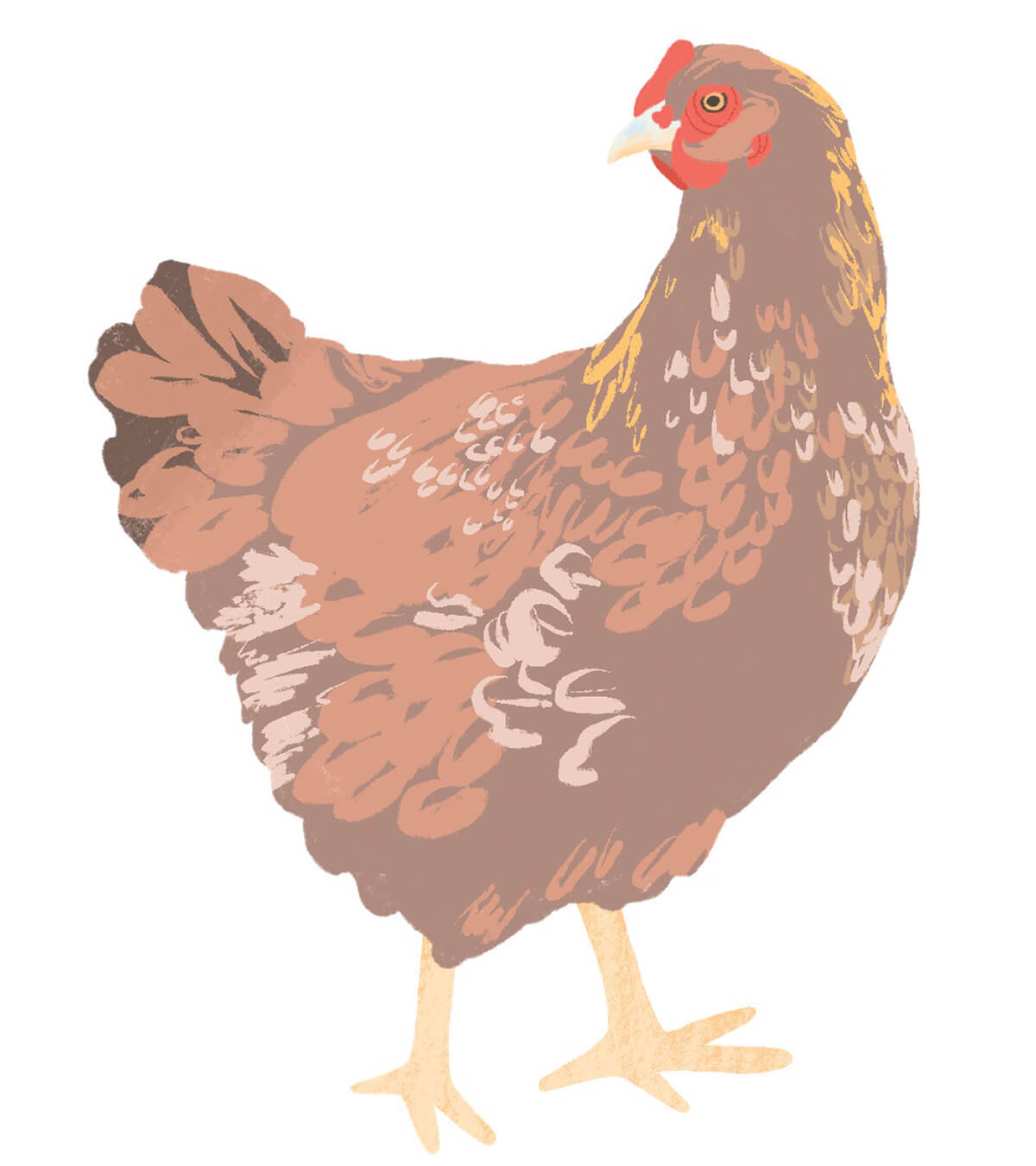

SILKIE
Silkies are gentle and friendly, but let’s be honest, their fabulous pompom of feather-soft plumage is what makes them irresistible.
RHODE ISLAND REDS
No one out-lays a Red. These auburn beauties are the definition of dependable and can produce 200-300 eggs a year.
BARRED ROCK
Made in the USA, this homegrown breed is popular for being cold hardy and steady in both temperament and egg-laying.